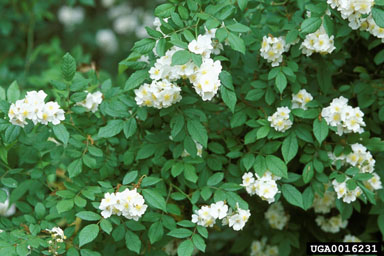New Regulations on Invasive Plant Species Now in Effect in New York

Last September, the New York Department of Environmental Conservation published a summary of plant species in the State Register that are nonnative to the region’s particular ecosystem, with the intent to ban them within six months. Echoing a strident “keep it local” trend that is overtaking other industries, the DEC’s new regulations went into effect last week.
Forty-nine terrestrial, twelve aquatic and six wetland plants are among the DEC’s “most wanted” invaders. According to its summary, “All New Yorkers have a stake in the invasive species issue. By preventing introduction of new invasive species, New York will save time, effort, and money in the future.”
Invasive species can harm natural communities and systems (plants and animals found in particular physical environments) by out-competing native species, reducing biological diversity, altering community structure and, in some cases, changing ecosystems. Invasive species threaten New York’s food supply, not only agriculture but also harvested wildlife, fish and shellfish; our landscaping, parks, gardens, and pets; and our recreation resources and even animal and human health. — DEC
What is the difference between prohibited and regulated species? The former means that these plants cannot knowingly be sold, imported, purchased, transported, introduced or propagated, whereas the latter means plants cannot be knowingly introduced into a free-living state or by a means that might lead to any of the prohibited actions listed above.
New York State’s invasive species regulations are among the most comprehensive and pre-emptive in the U.S. because its DEC’s restrictions apply to a wide range of all three categories of plants. In 2010, the Environmental Law Institute published a report on the status of invasive species policy-making in 11 states. For updates and more information, the U.S. Department of Agriculture’s National Invasive Species Information Center provides an excellent resource of laws and regulations by state. Another helpful website is Invasive.org.
Our local newspapers covered the story last week. The Journal News reported that many of the banned plants are “home and commercial landscaping favorites, such as Japanese barberry, Autumn olive, privet, multiflora rose, yellow iris, and several types of bamboo, spurge and honeysuckle.” Pamela Doan, who authors the Roots and Shoots column at Philipstown.info, interviewed Eric Lind, director of Constitution Marsh Audubon Center and Sanctuary, located in our hometown of Garrison: “We have our choice of exotics, and we have to think carefully about what we can do to prevent degradation of the habitat.”
Rosa multiflora (multiflora rose). Photo by James H. Miller, USDA Forest Service, Bugwood.org.
